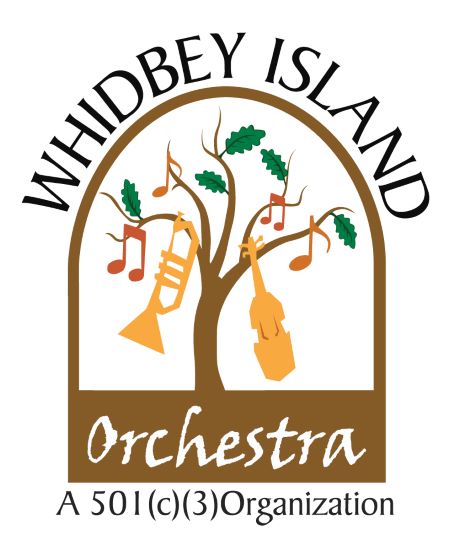 Whidbey Island Orchestra
Your Community Orchestra
Whidbey Island Orchestra
Your Community Orchestra
 Whidbey Island Orchestra
Your Community Orchestra
Whidbey Island Orchestra
Your Community Orchestra
NEW: Faust Ballet #1 (our version)
NEW: Faust Ballet #3 (our version)
NEW: Faust Ballet #5 (our version)
NEW: Faust Ballet #7 (our version)
Playlist (courtesy Curtis Price): Playlist
Friday, October 10, 7 pm, Island Church of Langley
Sunday, October 12, 3 pm, Trinity Lutheran Church
Friday, December 12, 7 pm, Island Church of Langley
Sunday, December 14, 3 pm, Trinity Lutheran Church
Saturday, March 14, 7:30 pm
Whidbey Island Center for the Arts Main Stage
Saturday May 16, 2026, 7:30 pm and Sunday, May 17, 2026, 2 pm
Whidbey Island Center for the Arts Main Stage
Late Spring/early summer (TBA)
Use a tuner. If you don't, after a while, your habitual mis-tuned notes start to sound ‘right’.
Practicing with a metronome will help you keep up during rehearsals. Tuner-metronome combinations are not expensive, and free apps are available for smartphones.
Play very slowly noting and understanding the meaning of each word and marking. Ask your teacher or section head, or web-search anything you don’t understand. Observe bowings and fingerings.
It’s much harder to unlearn than to learn. Get it right the first time, even if very slowly. That way, muscle memory becomes your friend.
Rarely play the parts you can play perfectly. Concentrate on what needs to improve.
Mark short areas – a few notes, sometimes just two – for concentrated work. In marked areas, select very short passages. Play as slowly as it takes for you to play perfectly – repeat 5 consecutive perfect times. Increase speed, never going faster than you can play 5 times in a row perfectly. If you make an error, start the count of 5 over again. If you make the same error persistently, shorten the passage you are practicing.
“Music is almost all scales and arpeggios” – Cynthia. So practice scales and arpeggios daily.
Posted beginning time of the rehearsal is “first downbeat” by the conductor. By that time the players need to be present, tuned, and warmed up, with music organized. Situate yoiurself so you have a clear (unobstructed) view of the conductor.
Concertmaster (CM) leads the tuning:
First, CM gets the pitch from keyboard, oboe, or tuner.
Next, CM plays the pitch. After a few seconds, the woodwinds tune to that pitch.
Next, CM plays the pitch. After a few seconds, the brass tune to that pitch.
Finally, CM plays the pitch. After a few seconds, the other strings tune to that pitch.
The primary purpose of the rehearsal is for the musicians to learn to play together – that is, for orchestra practice, not individual practice. Except for sight-reading sessions, it is not the time for musicians to see the piece for the first time or figure out how to get from one note to the next. Like school, orchestra playing requires homework.
Any extraneous playing not under the direction of the conductor is counterproductive. This includes working through difficult passages you should have mastered in home practice. It also includes any playing beyond the point where the conductor calls a halt. Playing after the conductor stops shows you were not watching the stick.
The other purpose of the rehearsal is for the conductor to shape the musicians’ play to develop the conductor’s desired tone and balance, by giving feedback to either a section or the orchestra as a whole. It is difficult to hear speech in our rehearsal spaces, and our rehearsal time is quite limited. Any talking or playing while the conductor is talking is very disruptive.
While we have a relatively low-key approach, interactions should rarely be initiated by anyone other than the conductor. Well-thought-out suggestions about playing style can be shared with the conductor at break or outside rehearsal. Questions about notes that look wrong or subtle rhythms should first be addressed to the section lead at the break or after rehearsal. An exception might be made for clarifications of conducting style such as whether the conductor is conducting in one or in three in a given section. Casual, off-the-cuff comments are not appropriate. Please think hard before you comment.
If you think the conductor does not notice that a section or player is making errors or is playing out of tune, with poor tone, or too loudly, you are mistaken. Player comments about issues such as these are uniformly destructive and will not be tolerated. The section leader or conductor will deal with these issues at the appropriate time.